
Table of Contents
ToggleIntroduction
The Moscow Kremlin Palace is a colossal symbol of the governmental might, cultural legacy, and rich history of Russia. This architectural wonder, tucked away in the center of Moscow, is more than just a structure—it’s a living representation of the history of the country. The Moscow Kremlin Palace is a place of discovery and adoration with its magnificent rooms, exquisite art collections, and important role in political and cultural events. We shall explore the Moscow Kremlin Palace’s architectural wonders, cultural influences, and historical significance in this piece, revealing the many facets that contribute to its status as one of Russia’s most recognizable sites.
A Historical Overview: The Heart of Russian Power
The Birth of the Kremlin
The history of the Moscow Kremlin Palace dates back to the late 15th century, a critical era in which Moscow started to establish itself as Russia’s political center. When the Kremlin was first built, it was intended to be a fortified citadel that would keep the city safe from possible attacks and internal conflict. This early building served as the model for the later construction that would become a representation of Russian might. As Moscow gained international significance, the need for a stately home became more pressing, signaling the transition from a place of just defense to one of political authority.
A Seat of Government
Russia’s governing hub has been the Moscow Kremlin Palace for the entirety of its illustrious history. From Ivan III’s expansion and fortification of Moscow until the turbulent era of the Bolshevik Revolution, it has seen the birth and fall of dynasties. Proclamations from the state, treaties of great importance, and emperor coronations have all taken place in front of the palace. With every event, the palace’s position as a center of government was cemented, and its significance as a national asset deeply ingrained in Russian history was further reinforced.
The Modern Era
As the official residence of the Russian President, the Moscow Kremlin Palace continues to hold significance even in modern times. It keeps hosting important official occasions, diplomatic gatherings, and global summits, which strengthens its standing as an essential forum for political discussion. The palace connects historical legacy with contemporary government, existing not merely as a reminder of the past but also as a vibrant character in Russia’s ongoing story.
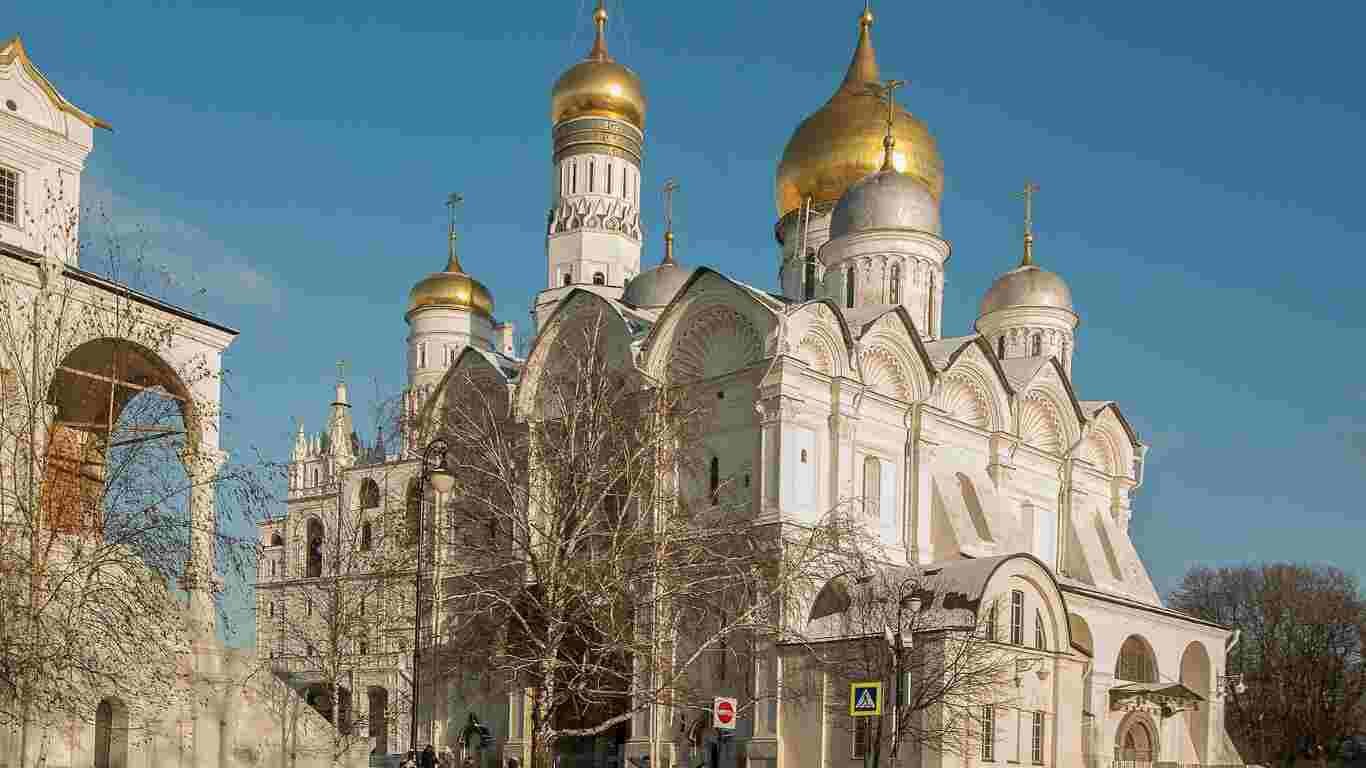
Architectural Marvel: Design and Structure
A Fusion of Styles
The Moscow Kremlin Palace’s opulent architecture, which blends Byzantine, traditional Russian, and Neoclassical architectural elements, is a monument to a variety of design influences. Inside the Kremlin complex, it stands out due to its appearance, which is marked by large columns, colorful facades, and intricate craftsmanship. Russian architecture has evolved over the years, and this blending of forms is a reflection of both the country’s rich cultural legacy.
Key Architectural Features
The Moscow Kremlin Palace offers a dizzying mix of majestic halls and exquisite chambers to its visitors. Reputable for its lavish architecture, the Order of St. Andrew’s Hall hosts major events and state parties. Another noteworthy location is St. George Hall, which is well-known for both its historical significance and exquisite design. Every room in the palace is beautifully built, with ornate moldings, lofty ceilings, sumptuous furnishings, and great artwork that all combine to create the regal atmosphere that permeates the Moscow Kremlin Palace.
Notable Architects
Several well-known architects, most notably Konstantin Ton, influenced the Moscow Kremlin Palace’s design. His concept combined traditional Russian components with contemporary building methods. Ton’s work on the palace is an example of his dedication to maintaining the site’s historical character while making the necessary changes to meet modern needs. The outcome is a building that successfully combines historical value with contemporary practicality to guarantee that the Moscow Kremlin Palace will always be a significant representation of Russian identity.
Significance of the Moscow Kremlin Palace in Russian History
A Symbol of Power and Authority
Russia has traditionally considered the Moscow Kremlin Palace to be a symbol of authority and strength. Its imposing presence and magnificent architecture represent the state’s might and the continuity of its leadership. Reiterating its status as a stronghold of national pride, the palace has hosted important political events throughout history, such as the signing of treaties and the proclamation of wars.
Events That Shaped Russia
Many important occasions that have influenced the course of Russian history have been witnessed in the corridors of the Moscow Kremlin Palace. The palace quietly watches as the story of the country changes, from the Tsars’ historic choices to the revolutionary fervor of the 20th century. Its rich historical tapestry is enhanced by every event inscribed onto its walls, giving it a site of great significance.
Cultural Resonance
Beyond its political significance, the Moscow Kremlin Palace is a cultural icon that displays Russia’s artistic prowess. The elaborate artwork and historical items strewn all throughout the palace tell the tale of the country’s rich past. The palace’s significance is increased by this cultural resonance, which positions it as a major agent in the defense and advancement of Russian identity.
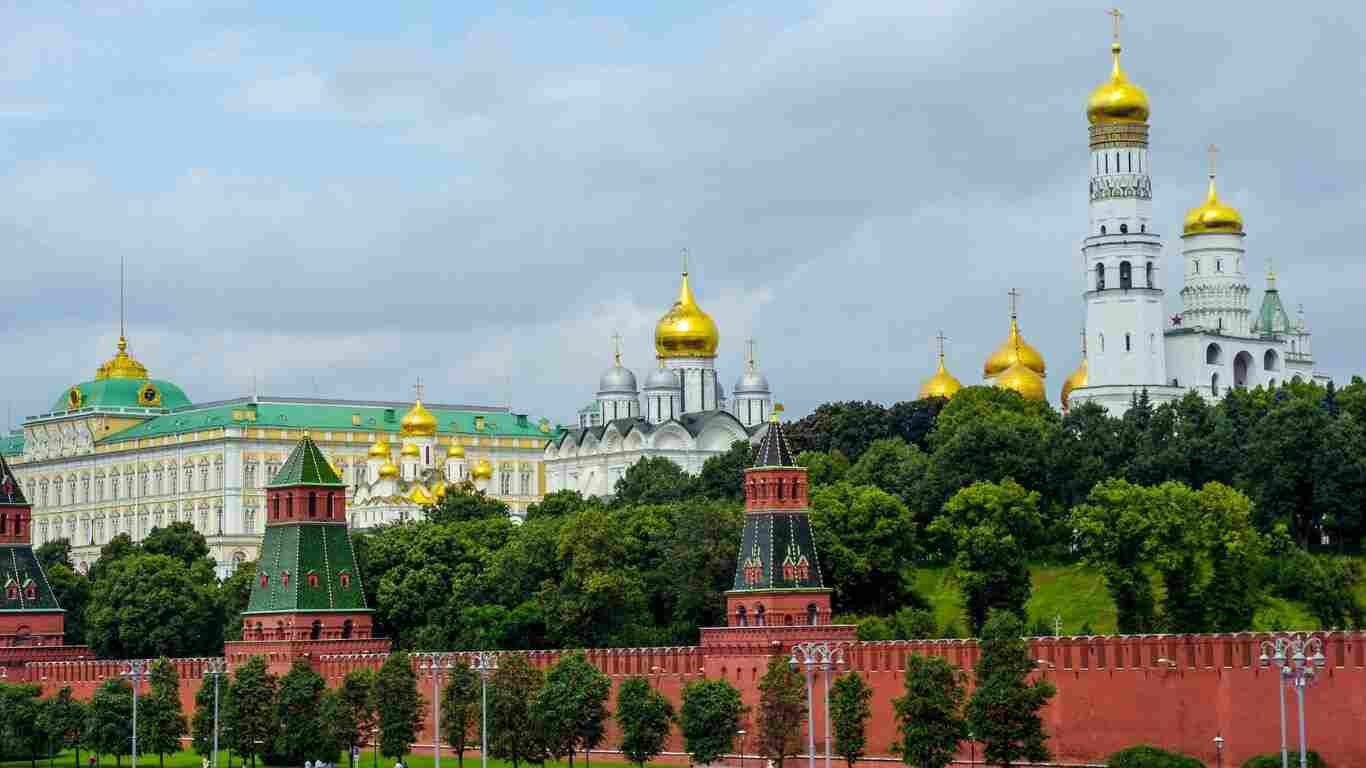
Grand Halls
The Hall of the Order of St. Andrew
One of the most prestigious rooms in the Moscow Kremlin Palace is the Hall of the Order of St. Andrew. Renowned for its lavish architecture, this hall hosts formal ceremonies and state receptions, acting as a location for significant national assemblies. The opulent ornamentation, which includes elaborate murals and gilded embellishments, creates a regal ambiance that honors the historical significance of the events that occur inside.
The St. George Hall
St. George Hall is also worth mentioning because of its historical significance and magnificent architecture. This large area serves as an appropriate backdrop for significant national events and is frequently utilized for state dinners and celebrations. Rich textiles and chandeliers embellish the hall’s beautiful design, which exudes elegance and devotion and makes it a beloved feature of the Moscow Kremlin Palace.
The Kremlin’s Ceremonial Halls
The Moscow Kremlin Palace’s ceremonial halls each have a distinct purpose that strengthens the building’s significance in Russian politics. These places are more than just places to hold events; they are archives of culture and history, bringing the past to life. Indulge in the rich history that is being unfolded behind the walls of these majestic halls by exploring them.
Iconic Art and Artifacts
The Art Collection of the Kremlin
A vast collection of artwork and relics that showcase Russia’s rich cultural heritage may be found at the Moscow Kremlin Palace. The palace’s art collection, which includes both modern and old religious icons, provides a glimpse into the development of national art. Each piece of art contributes to a fuller knowledge of the cultural narratives that have defined Russia by showcasing the skill of Russian painters while also telling a tale.
Historical Artifacts
Numerous historical relics, like as ceremonial weapons, opulent textiles, and presents from foreign dignitaries, are kept among the treasures at the Moscow Kremlin Palace. These artifacts demonstrate the richness and authority of the Russian state and provide material links to the past. The palace’s historical relics offer priceless insight into the lives of Russia’s monarchs and the pivotal moments that have defined the country.
Preservation of Culture
Through its collection of artwork and continuous restoration projects, the Moscow Kremlin Palace plays a crucial role in maintaining Russian culture. In addition to serving as a showcase for creative excellence, the palace preserves history and makes sure that next generations can recognize the depth of Russian ancestry. Through workshops, exhibitions, and educational programs, the cultural significance of the palace is better understood, raising public awareness of and appreciation for Russia’s artistic heritage.
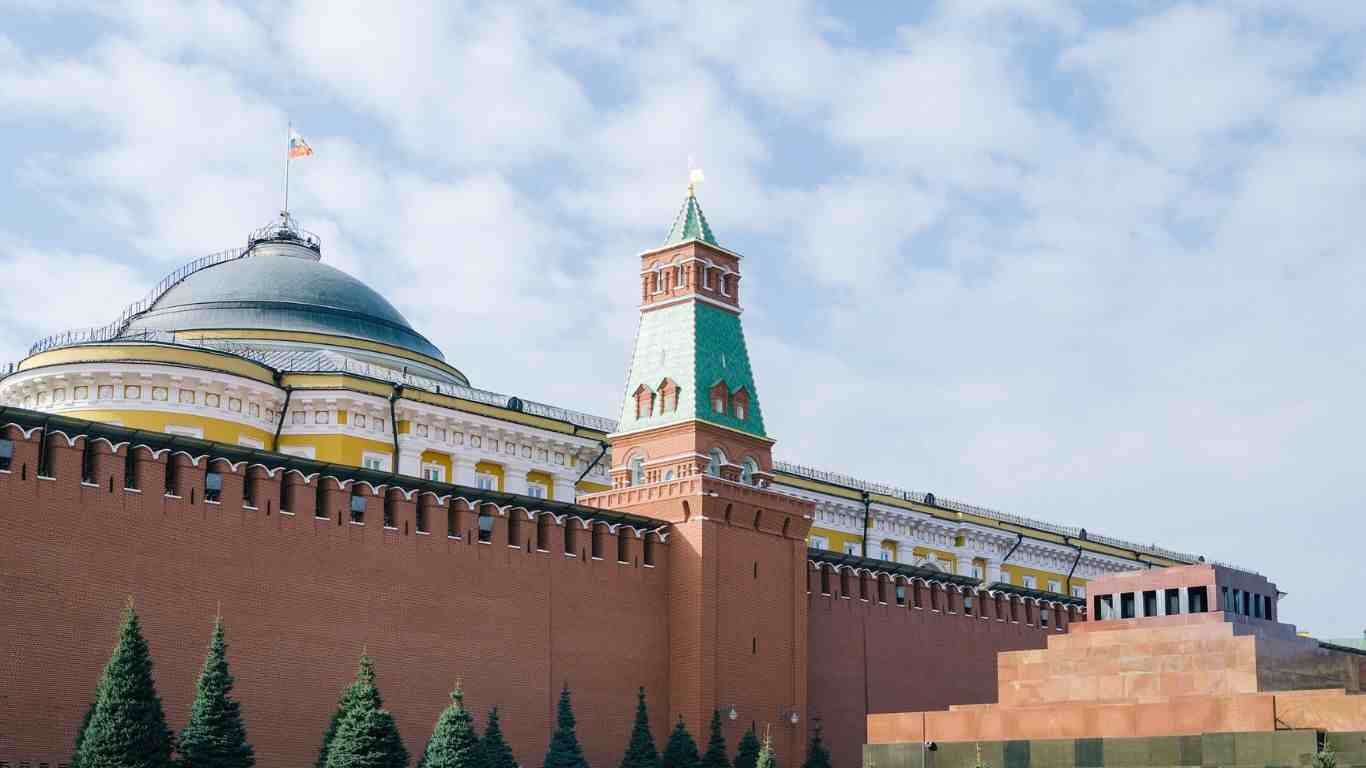
The Political and Cultural Influence
A Venue for Diplomacy
Russia’s relations with other countries are shaped by state visits, summits, and discussions held at the Moscow Kremlin Palace, which is an important location for international diplomacy. The palace’s magnificence serves as a sophisticated backdrop for high-profile gatherings, highlighting the significance of diplomacy in upholding international relations. Its historical significance highlights the palace’s function as a hub for political interaction and heightens the seriousness of conversations held within its walls.
Cultural Events and Festivals
Apart from its political importance, the Moscow Kremlin Palace is the venue for several cultural gatherings and festivals honoring Russian ancestry. These events feature traditional dance, music, and artwork, giving artists and performers a stage on which to display their original works. As a thriving center for artistic expression, the palace attracts residents and visitors who are keen to experience the depths of Russian culture.
The Intersection of Politics and Culture
The meeting place of politics and culture, where choices are made, and creative expression is honored, is the Moscow Kremlin Palace. Its dual function increases its importance in Russian society by positioning it as a hub for both cultural involvement and governance. The palace’s opulent architecture and extensive history offer a distinctive setting for occasions that influence the cultural landscape of the country, strengthening the bond between cultural identity and political authority.
The Tsar’s Residence: Royal Rooms and Legacy
The Living Quarters of the Tsars
Numerous Tsars resided at the Moscow Kremlin Palace, whose regal chambers capture the splendor of the Russian throne. The exquisite interior design of every room conveys the opulent way of life led by the Tsars. Visitors can experience the opulence of royal living thanks to the elaborate decorations, opulent furnishings, and superb artwork that provide an insight into the lives of people who formerly ruled from this magnificent castle.
Historical Figures
The lives of significant historical personalities are entwined with the heritage of the Moscow Kremlin Palace. The palace was forever altered by tsars such as Ivan the Terrible, Peter the Great, and Catherine the Great, who also shaped the history of Russian leadership. Their choices and deeds had an impact on Russian history and administration, reverberating through the palace’s hallways.
A Reflection of Royal Power
Situated in the Moscow Kremlin Palace, the royal apartments are potent emblems of power and control. The palace’s standing as a symbol of authority is strengthened by their reflection of the splendor and wealth typical of the Russian dynasty. Through exploration, guests can learn more about the lives of the former palace occupants and how they fit into Russia’s larger historical story.
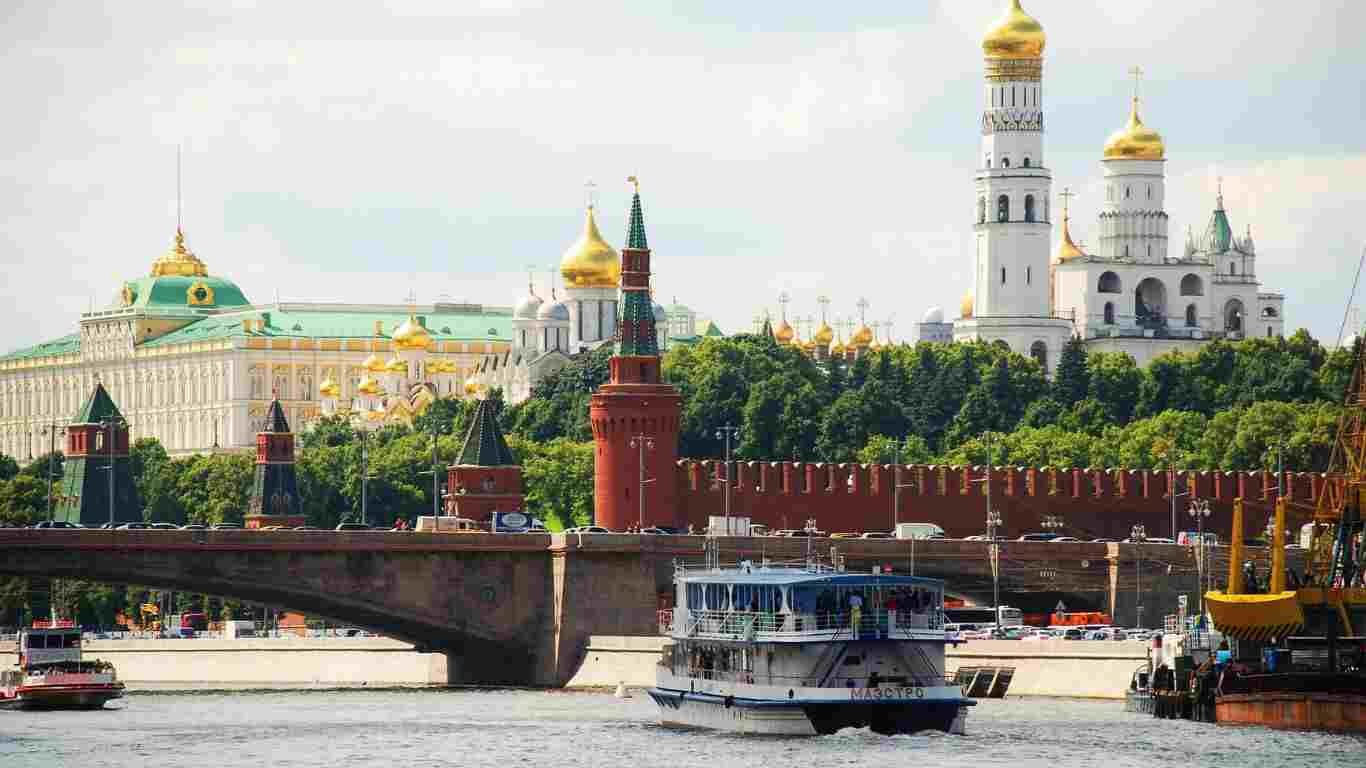
The Kremlin Palace Grounds: A Tour Through History
The Kremlin Complex
The Moscow Kremlin Palace is a piece of a larger complex that is recognized as a UNESCO World Heritage Site and consists of numerous ancient buildings, churches, and gardens. This group gives guests a thorough understanding of Russia’s past and symbolizes the core of the country. The Kremlin complex, where every structure and monument adds to the nation’s overall story, is a potent symbol of Russian heritage.
Gardens and Outdoor Spaces
The tranquil atmosphere that envelops the Moscow Kremlin Palace is created by the exquisitely designed grounds. In the middle of the busy metropolis, the sculpture- and fountain-filled gardens provide a tranquil haven. The whole experience of touring the palace and its surrounds is enhanced by the frequent usage of these outdoor areas for state ceremonies.
Guided Tours and Exploration
There are guided tours of the Moscow Kremlin Palace accessible for individuals who would like to learn more about its past. Experiences that are not available to the public are enhanced by these excursions, which provide professional insights and access to regions. Guests can experience Russia’s rich history and become engrossed in the tales that define this renowned landmark by exploring the palace and its surroundings.
Events and Celebrations
State Ceremonies
Several state ceremonies are held at the Moscow Kremlin Palace, which further solidifies its standing as a symbol of pride in the country. These celebrations underscore the significance of the palace in the political landscape while honoring the history and unity of the Russian people. The palace provides the setting for events that shape the identity of the country, from formal receptions to national holidays.
Cultural Celebrations
Cultural celebrations showcasing the richness of Russian traditions are held at the Moscow Kremlin Palace in addition to political ones. The richness of Russia’s artistic legacy is highlighted by festivals, concerts, and exhibitions that draw tourists from all over the world. Through these activities, the palace emphasizes its role in fostering cultural involvement and cultivating a feeling of community and shared identity.
The Role of the Palace in Public Life
Major events that unite citizens and authorities take place at the Moscow Kremlin Palace, which functions as a hub for public life. The palace represents pride and solidarity for the Russian people as a result of this relationship, which highlights its significance in the country’s conscience. Along with commemorating the history of the country, the palace festivities provide a forum for inter-citizen discussion and cooperation.
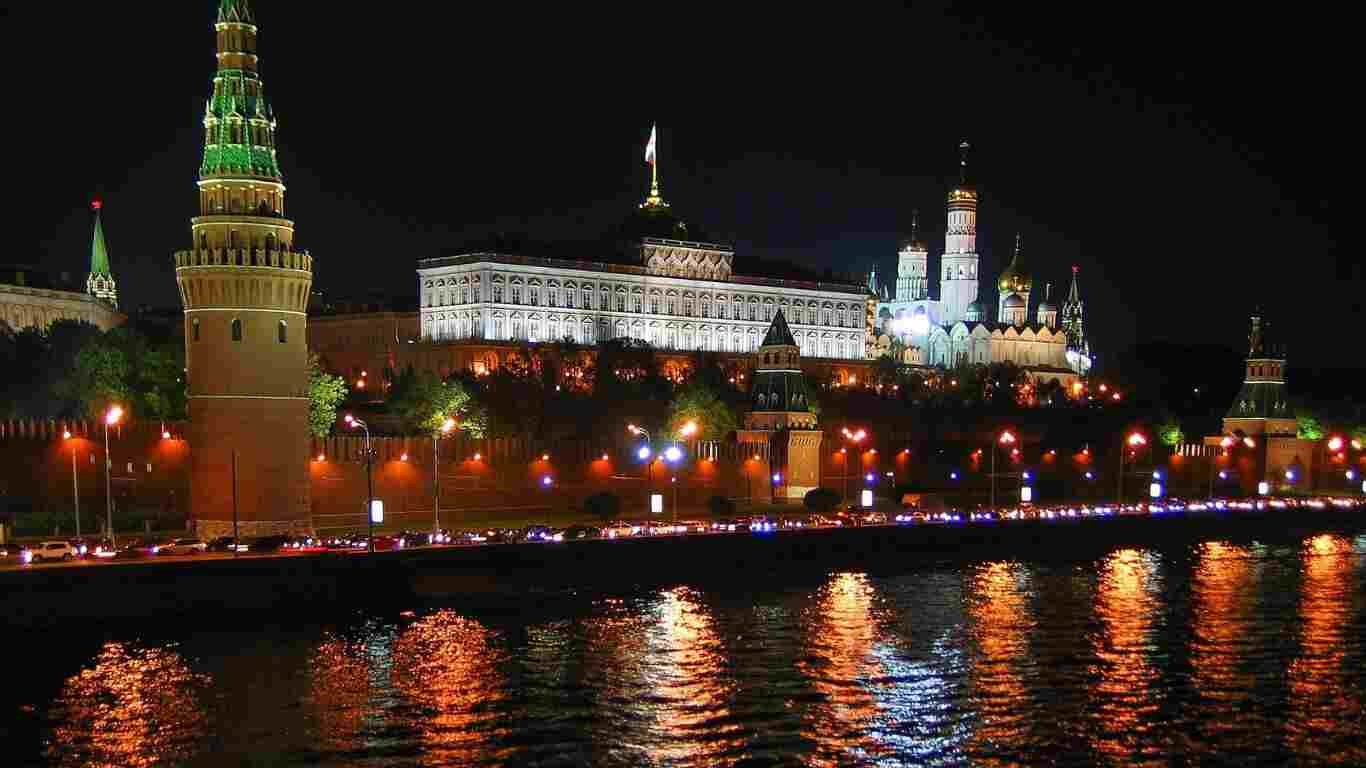
The Kremlin Armoury Museum: A Treasure Trove
The History of the Armoury
The Kremlin Armoury Museum, which is next to the Moscow Kremlin Palace, is home to a vast collection of items that highlight Russia’s artistic and military past. The museum was founded in the fifteenth century and has a large collection of weapons, armor, ceremonial garb, and artwork that highlights Russian artists’ skill and artistry. Russia’s cultural heritage and military prowess are preserved through the museum, which acts as a historical archive.
Notable Artifacts
Explore an astounding collection of items in the Kremlin Armoury Museum, such as elaborate weapons, elaborate crowns, and medieval banners. Every object has a backstory that provides insight into the lives of those who used these weapons and the historical occasions that created Russia. The Imperial Regalia, which features the Russian monarchy’s crown jewels, is one of the museum’s most noteworthy collections. It depicts the grandeur of the Tsars and their dedication to flaunting their authority and power.
Educational Opportunities
The Kremlin Armoury Museum serves as both an educational tool and an exhibit for artifacts. The museum provides visitors with an opportunity to interact with Russia’s history and culture through interactive displays, guided tours, and exhibitions. The museum is an essential part of visiting the Moscow Kremlin Palace because educational programs are designed to help visitors gain a greater appreciation of the value of the items and the stories they represent.
Visitor Experience: Exploring the Palace
Planning Your Visit
Thorough preparation is necessary if you want to enjoy the Moscow Kremlin Palace to the fullest. Considerations for visitors include things like guided tour alternatives, ticket availability, and opening hours. Being organized can assist guarantee a hassle-free and delightful visit to the palace, which is a well-liked tourist location. It is recommended to stay informed about any updates regarding special events, exhibitions, or temporary closures by visiting the official website.
What to Expect During Your Visit
Visitors are astounded by the Moscow Kremlin Palace’s majesty and splendor as soon as they step inside. The massive foyer, which displays the interior architectural wonders, sets the mood for the entire encounter. Visitors are free to explore the many hallways and rooms, each of which provides a distinctive window into Russian history and culture. Visitors can interact with the tales behind the architecture and artifacts while receiving insightful explanations of the significance of the palace’s elements through guided tours.
Souvenirs and Dining Options
It’s possible that visitors to the Moscow Kremlin Palace will want to buy mementos to remember their trip. The palace’s gift stores sell a range of goods, such as artwork, books, and traditional Russian crafts. These mementos provide as enduring reminders of the splendid palace and its illustrious past. Additionally, there are dining alternatives where guests can savor traditional Russian food. Whether dining in the palace complex or at neighboring eateries, visitors can enjoy Russian cuisine while thinking back on their trip to the Moscow Kremlin Palace.
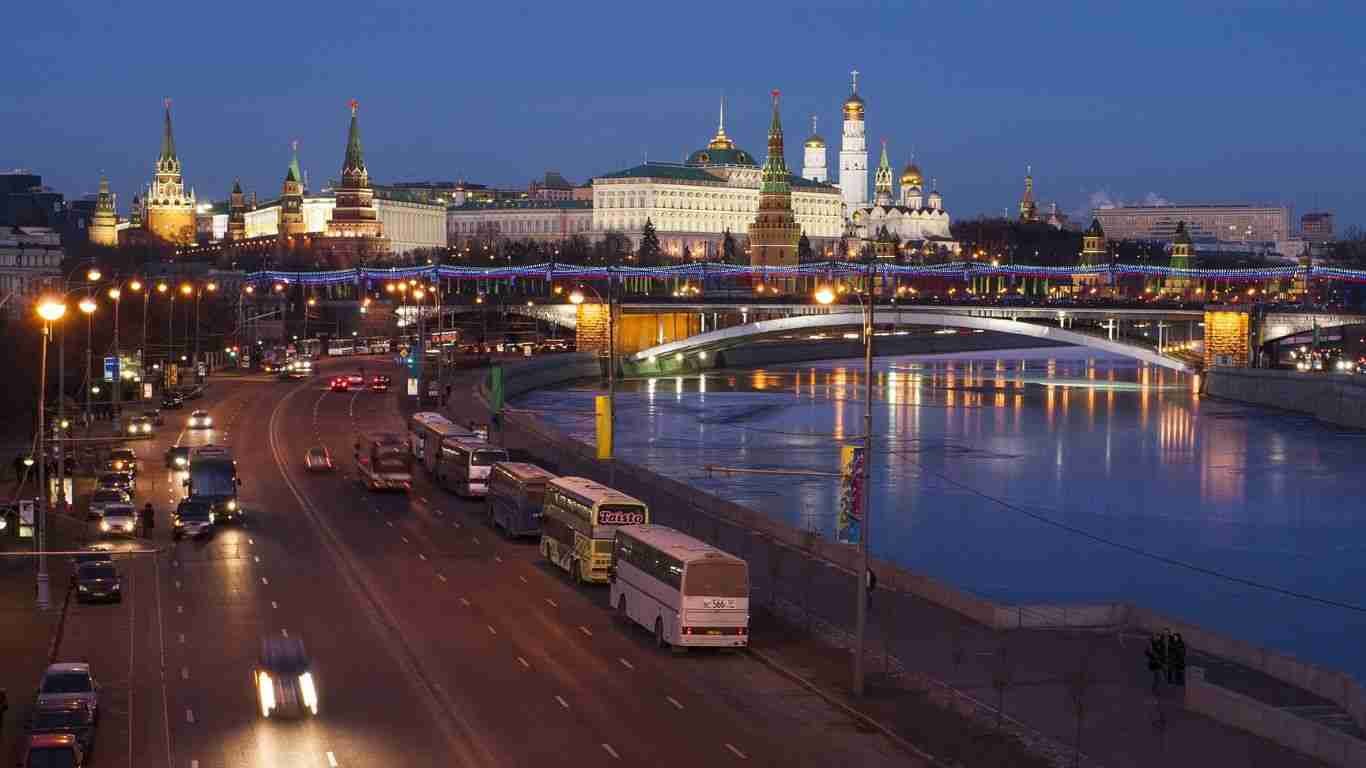
Tips for Visiting
Best Times to Visit
When planning your vacation, take into account the best times to see the Moscow Kremlin Palace. Because of the reduced crowds and generally nicer weather, the shoulder seasons of spring and fall are perfect for touring the palace. You can have a more personal experience and appreciate the splendor of the palace more fully if you visit at these times. Weekends are usually busy with both locals and tourists, so if your schedule allows, try to visit during the week. To avoid the busiest times of the day and have more time to tour the palace, consider visiting in the early morning or late afternoon.
Dress Code Considerations
Although there isn’t a rigid dress requirement, it’s generally advised to wear appropriately when visiting the Moscow Kremlin Palace. The palace has cultural significance as a historical and political monument, and dressing appropriately can improve your visit. It’s also advisable to wear comfortable shoes because tourists may need to wander a lot throughout the palace and its gardens.
Photography Guidelines
In many parts of the Moscow Kremlin Palace, photography is permitted; nevertheless, make sure to confirm any particular restrictions, particularly in locations that are sensitive or holy. While taking pictures of the palace’s splendor will help you remember your visit for a long time, following the rules is necessary to maintain the site’s integrity.
Explore Nearby Attractions
Take a look at neighboring sights like Red Square, St. Basil’s Cathedral, and the Bolshoi Theatre in addition to the Moscow Kremlin Palace. These websites enhance your entire visit to Moscow by providing a thorough understanding of the city’s cultural and historical significance.
Learn Basic Russian Phrases
Even though many employees at the Moscow Kremlin Palace are fluent in English, knowing a few simple Russian words will make your stay more enjoyable. You can improve your cultural experience and establish a connection with the people by using basic greetings, thank yous, and courteous phrases.
Conclusion: A Timeless Icon of Russia’s Majesty
Not merely a structure, the Moscow Kremlin Palace is a tribute to the strength, culture, and legacy of Russia. The palace is the epitome of the Russian character, both in terms of its historical significance and architectural beauty. Visitors interact with the complex story that embodies this landmark building as they stroll through its vast hallways and minute details.
The Moscow Kremlin Palace is still a major character in Russia’s story because of its ongoing significance in political and cultural life. A visit to the Moscow Kremlin Palace is an incredible experience that emphasizes the enduring legacy of Russia, regardless of your interest in its history, art, or architectural beauty. Understanding the depth of the Moscow Kremlin Palace’s history and culture allows one to appreciate its craftsmanship and architecture, while also realizing the enormous impact it has had on Russia and its people. All who enter are invited to experience the majesty that is the center of Russian power, serving as both a memorial to the past and a beacon for the future.
